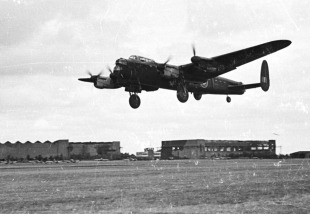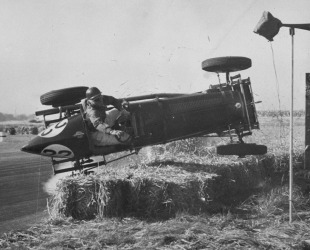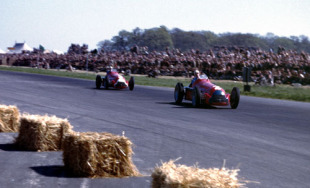
- Race:
- British Grand Prix
- Drivers:
- Nino Farina
- Teams:
- Alfa Romeo
- Circuits:
- Silverstone Circuit
Silverstone was literally put on the map during the depths of the Second World War. According to the BRDC archives, a heavy bomber aerodrome equipped with five large hangars was built for the RAF by civil engineers Mowlem at a reported cost of £1,112,565. It was conceived with a main 6000ft runway positioned north-south, together with intersecting runways of 3900 and 4200ft. Crucially for its subsequent metamorphosis into a makeshift race track in the immediate post-war years, the design also incorporated a perimeter track of three miles in length.
The late 1940s was a gruelling, hard and uncompromising period for the people of the United Kingdom. Rationing would last well into the 1950s, and the worst winter weather for a century virtually caused the country to grind to a halt under a nationwide blanket of snow during the early months of 1947. Yet beneath this unwelcome veneer of austerity, a small group of enthusiasts were determined to revive motor racing in some form or another and were determined that their spirit for the sport should not be snuffed out. Many of the potential participants had fought on active service and were determined that they would continue to be involved in a pastime that would keep their adrenalin pumping during peacetime.
The initial circuit was laid out around the perimeter roads of the former RAF base, with straw bales and oil drums delineating the edge of the circuit proper. It was the first time that a former aerodrome had been adapted for motor racing purposes, but it would be far from the last. A clutch of similar venues like Snetterton, Thruxton and Boreham were pressed into service as race tracks, offering the fun-starved general public a welcome helping of leisure amusement in those bleak post-war days.

Little thought was given to 'spectator facilities'. Indeed, it was memorably recounted by Hazel Morgan, the wife of RAC committee member John Morgan, just how primitive the toilets were in those early Silverstone days. After finally reaching the end of a very long queue for the ladies', she was sitting in the cubicle when she suddenly became aware of a draught and a "relaxation of the gloom around her legs."
"There you are, love," said a cheerful male Cockney voice. "A nice clean bucket for yer," and the cubicle darkened again as the flap behind the bucket closed.
Back in 1950, however, the BRDC, who would later come to own Silverstone, had yet to develop into the commercial powerhouse it has become today. Its remit was rather more modest. For that season the FIA had devised the first official world championship contest, which would be run over seven 'classic' races with the British Grand Prix at Silverstone opening the series. Even more exciting for the big wigs at the RAC, King George VI and Queen Elizabeth accepted an invitation to attend on the day, ensuring that the event would be an occasion to savour.

For Silverstone it was the start of a long journey which would carry the circuit to its current position as one of the cutting edge facilities of world motorsport and a track which at the end of 2009 finalised the longest commercial contract for the staging of a round of the official FIA Formula 1 world championship. The new deal is set to last for an impressive 17 years and will guarantee that British motor racing fans will remain at the epicentre of international motorsport well into the future.

